SEIDIGESTAN® 100mg (PROGESTERONE)
Medicinal product subject to medical prescription.
RRP* (30 capsules): 5,81€
(Product financed by the National Health System)
Oral administration:
– Irregular menstrual cycles due to ovulation disorders
– Premenstrual syndrome
– Perimenopause
Vaginal administration:
This route is used specifically in the following cases:
Prevention of preterm birth in pregnant women with a short cervix on ultrasound examination performed in the second trimester of pregnancy.
1 - NAME OF THE MEDICINAL PRODUCT
2 - QUALITATIVE AND QUANTITATIVE COMPOSITION.
Each capsule contains:
Seidigestan® 100 mg: 100 mg of progesterone
Seidigestan® 200 mg: 200 mg of progesterone
For the full list of excipients, see section 6.1.
3 - PHARMACEUTICAL FORM
Soft capsule
Seidigestan® 100 mg: spherical cream-coloured capsules
Seidigestan® 200 mg: ovoid cream-coloured capsules
4 - CLINICAL PARTICULARS.
Seidigestan® 100 and Seidigestan® 200 are indicated in:
Oral administration:
In the menopause: as a complement to oestrogen therapy in women with an intact uterus.
Vaginal administration:
This route of administration is used particularly in the following cases:
Posology
The dose regimen should be established according to each patient’s plasma hormone levels.
Method of administration
Oral administration:
Take the capsules with a glass of water, away from mealtimes. The average recommended dose is 200 to 300 mg of progesterone daily, i.e., 200 mg in the evening at bedtime or 100 mg in the morning and 200 mg in the evening at bedtime.
Vaginal administration:
Insert the capsules deep into the vagina by pushing them in with the finger. The following regimens are normally used:
4.3 Contraindications
4.4. Special warnings and precautions for use
4.5. Interaction with other medicinal products and other forms of interaction
No significant clinical interaction has been observed in the studies conducted.
Seidigestan® 100 or Seidigestan® 200 with food and drink:
Based on the studies carried out, it can be deduced that ingestion of food after taking the capsules increases the bioavailability of natural micronised progesterone. Therefore, the medication should be taken at the same time, away from mealtimes, avoiding variations in the administration schedule from one day to another.
4.6. Fertility, pregnancy and lactation
Pregnancy
Progesterone is the hormone that increases during pregnancy, so its administration during pregnancy does not induce adverse effects.
Breast-feeding
Progesterone is excreted in breast milk; therefore, its administration in breast-feeding women is not recommended.
4.7 Effects on ability to drive and use machines
A risk of drowsiness and/or dizziness has been reported in relation to the use of oral progesterone. Patients who drive vehicles and use dangerous machinery are warned about this possibility.
4.8. Undesirable effects
The most common adverse reactions are:
Oral administration
Vaginal administration
There are no general side effects such as drowsiness or transient dizziness at the recommended dose.
Reporting of suspected adverse reactions
Reporting suspected adverse reactions after authorisation of the medicinal product is important. It allows continued monitoring of the benefit/risk balance of the medicinal product. Healthcare professionals are asked to report any suspected adverse reactions via the Spanish Pharmacovigilance System of Medicines for Human Use: www.notificaRAM.es.
4.9 Overdose
The therapeutic dose used in women (average: 6 mg/kg/day of micronised progesterone for a woman who weighs 50 kg) is 50 times lower than the toxic dose (acute toxicity). Therefore, 150 capsules of Seidigestan® 100 or 75 capsules of Seidigestan® 200 would have to be taken to reach the toxic dose, an amount that is not supplied in a normal pack.
In the event of overdose or massive ingestion, various effects can occur, such as menstrual disorders, including amenorrhoea, and also sedation and hepatic abnormalities. These effects are reversible and disappear when the medicinal product is discontinued.
5 - PHARMACOLOGICAL PROPERTIES
5.1 Pharmacodynamic properties
Pharmacotherapeutic group: G03DA04 – Progesterone
5.2 Pharmacokinetic properties
For oral administration
Micronised progesterone is absorbed in the digestive tract.
Progesteronaemia begins to increase within the first hour and the highest plasma levels are observed between the first and third hour after ingestion.
Pharmacokinetic studies conducted in volunteers show that after ingestion of 200 mg of progesterone, the mean plasma levels of progesterone are as follows: between 0.13 ng/ml and 4.25 ng/ml one hour after ingestion, 11.75 ng/ml after 2 hours, 8.37 ng/ml after 4 hours, 2 ng/ml after 6 hours and 1.64 ng/ml after 8 hours.
There are considerable variations between individuals, but the same individual maintains the same pharmacokinetic characteristics over several months. This makes it possible to adjust the dose on an individual basis.
Progesterone undergoes hepatic first-pass metabolism. It is partly metabolised in the liver cells, which progesterone enters via the portal system after oral administration. The pharmacologically active major metabolites are:
20a Dihydroxyprogesterone
17a Hydroxyprogesterone
5a Pregnanolone
5b Pregnanolone
Desoxycorticosterone
5a and 5b pregnanolone are responsible for the tranquillising effect of progesterone.
10% of progesterone is transformed into 20a dihydroxyprogesterone, which accounts for 25 to 50% of its progestational activity.
The majority of progesterone and its metabolites are excreted in the urine (95%) as pregnanediol glucuronide and pregnanolone. A small proportion of these metabolites are also eliminated by biliary and faecal excretion.
For vaginal administration
After vaginal administration, progesterone is rapidly absorbed through the vaginal mucosa, as shown by the increase in plasma progesterone levels from the first hour after administration.
The maximum plasma concentration of progesterone is reached 2 to 6 hours after application and remains at a mean concentration of 9.7 ng/ml for 24 hours after administration of 100 mg of progesterone in the morning and evening. This recommended average dose therefore induces physiological and stable plasma concentrations of progesterone that are similar to those observed during the luteal phase of a normo-ovulatory menstrual cycle. Slight inter-individual variations in the progesterone level make it possible to accurately predict the discount with a standard dose.
At doses above 200 mg/day, the progesterone concentrations obtained are comparable to those described during the first trimester of pregnancy.
The plasma concentration of 5b-pregnanolone is not increased.
Urinary elimination is primarily in the form of 3a, 5b-pregnanediol, as shown by the progressive increase in its concentration up to the maximum concentration of 142 ng/ml after 6 hours.
5.3 Preclinical safety data
The LD50 of micronised progesterone in female rats is equivalent to 50 times the dose recommended for clinical use in menopausal women (300 mg/day, i.e., 6 mg/kg/day of micronised progesterone for a woman who weighs 50 kg).
All single and repeated oral dose toxicity studies confirm that micronised progesterone is absorbed orally. It induces effects related to the intrinsic properties of the hormone, in addition to specific adverse reactions such as sedation and moderate hepatic impairment.
When administered vaginally, it does not have these side effects.
6 - PHARMACEUTICAL PARTICULARS.
Sunflower oil
Soy lecithin
Jelly
Glycerol (E 422)
Titanium dioxide (E 171)
They have not been described.
3 years
No special storage conditions are required.
Seidigestan® 100 mg: cardboard box with 30 capsules (2 blisters) or 60 capsules (4 blisters)
Seidigestan® 200 mg: cardboard box with 15 capsules (1 blister) or 60 capsules (4 blisters)
Disposal of unused medicine and all materials that have been in contact with it will be done in accordance with local regulations.
7 - MARKETING AUTHORISATION HOLDER.
SEID, S.A.
Carretera de Sabadell a Granollers, Km. 15 08185 – Lliçà de Vall (Barcelona)
8 - MARKETING AUTHORIZATION NUMBERS.
Seidigestan® 100: 60,814
Seidigestan® 200: 64,899
9 - DATE OF THE FIRST AUTHORIZATION/RENEWAL OF THE AUTHORIZATION.
Seidigestan® 100:
Date of first authorisation: 11 September 1995
Date of latest renewal: 27 June 2005
Seidigestan® 200:
Date of first authorisation: 08 July 2002
Date of latest renewal: 26 April 2007

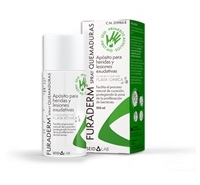
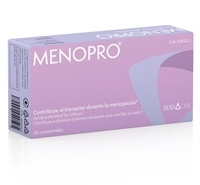

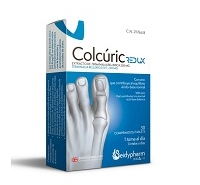

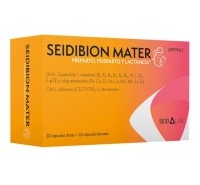
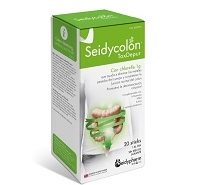

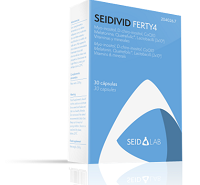
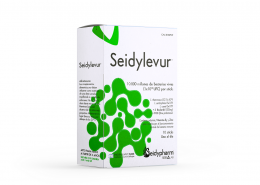
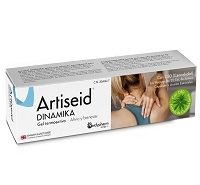

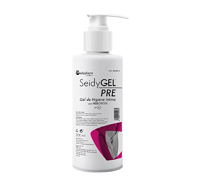
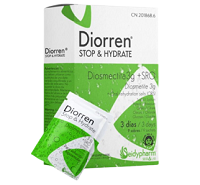
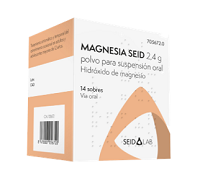
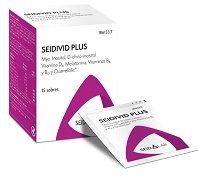
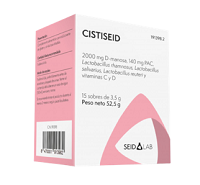
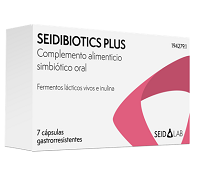
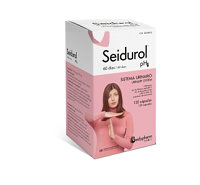
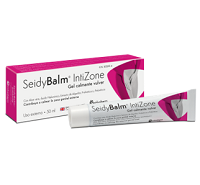
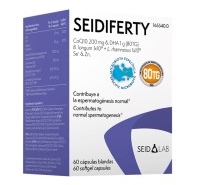
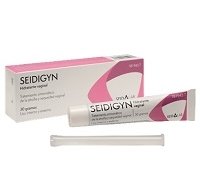
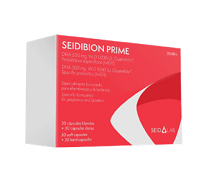
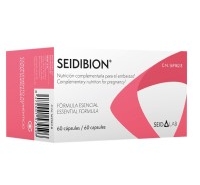


Carretera de Sabadell a Granollers Km 15 08185 Lliçà de Vall (Barcelona, Spain)
+34 93 844 57 30
INTERNACIONAL DEPARTMENT:
export@lab-seid.com

 OESTRACLIN®
OESTRACLIN®
Multilingual WordPress with WPML






